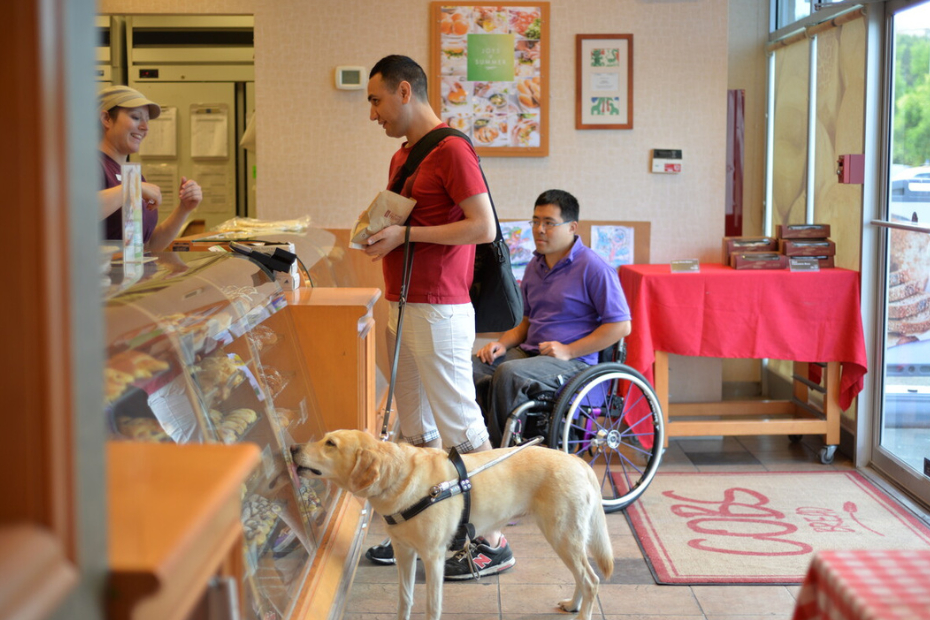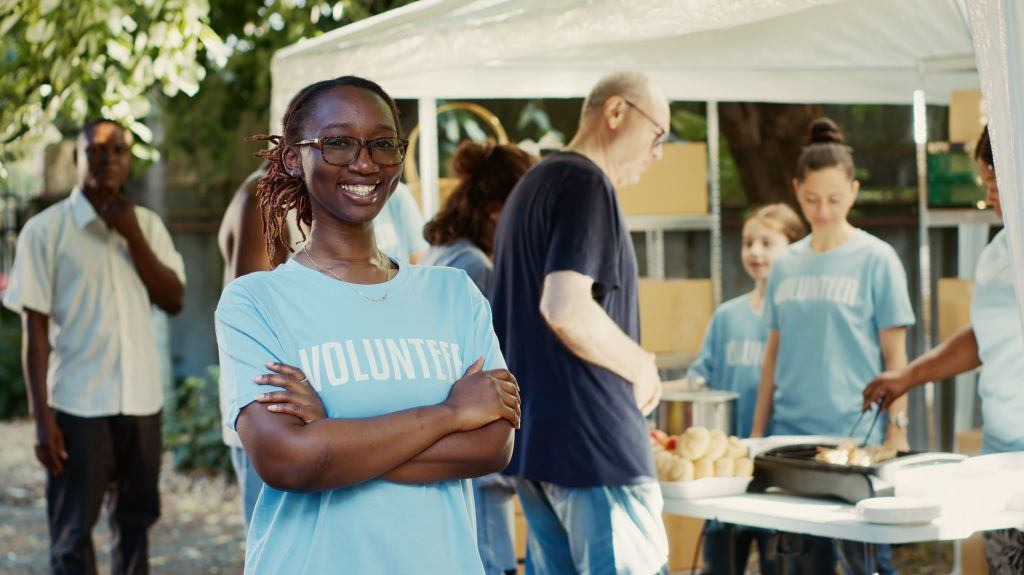Accessibility Quiz: Test Your Knowledge of Barriers to Accessibility

Published May 31, 2023 • 5 Min Read
A more accessible world is a more inclusive world.
But what does accessibility mean? For starters, it’s a world where every workplace enthusiastically provides accommodations — without requiring employees to jump through hoops. Or where community events prioritize things like interpreters, access to accessible restrooms, or remote attendance options. It could even be a world where more people take time to learn about a friend’s disabilities in order to better include them.
National AccessAbility Week, which takes place from May 28th to June 3rd this year, is a great opportunity to imagine that accessible world — and start working to make it possible. At RBC, we partner with the Rick Hansen Foundation, an organization that raises awareness and removes barriers for disabled people to help make that world a reality.
One critical step in that direction is discerning fact from fiction regarding accessibility. Here are 6 statements you can use to test your knowledge!
True or False: ‘People with disabilities’ is the correct term
+ Answer
IT DEPENDS: Language about disabilities is evolving, and every disabled person has their own preference. If you’re unsure — ask!
For example:
These two ways to refer to disabled people correspond with different models of disability. It believes that a person’s body is the thing that disables them. For example, the disability, in this case, might be the inability to walk. Identify-first language, meanwhile, is more aligned with what’s known as the social model of disability. It argues that the inability to walk isn’t actually what ‘disables’ someone. It’s the fact that there aren’t ramps or elevators in every building. In one, a person’s body is what makes the world inaccessible. In the other, it’s the world that’s inaccessible, not the body.
True or False: Stereotypes about disabled people are the biggest barriers to inclusion
+ Answer
TRUE: Misconceptions and outdated beliefs about disabled people are major barriers to inclusion.
For example, believing blind people are cognitively impaired and can’t do most of the same jobs non-disabled people can do limits blind people. Similarly, believing a nightclub doesn’t need ramps because, “no one in a wheelchair would want to go dancing,” excludes people with wheelchairs.
It’s important to challenge assumptions of what disability is and begin to uncover unconscious biases that may unfairly affect others. This can help set in motion the steps needed to create lasting change and a truly inclusive society.
True or False: Improving accessibility only benefits a small group of people
+ Answer
FALSE: In Canada, nearly 50 per cent of adults have some form of disability, have experienced a temporary disability, or live with someone who has. With more than 1 billion people with disabilities worldwide, disabled people are the largest minority group. Experiencing future disability/mobility issues in 5-to-10 years is also a concern for 64 per cent of Canadians. Improved access not only benefits people of all ages and abilities but also can help ensure more friends, family and caregivers are included in our communities.
True or False: Accessibility primarily means ramps and larger bathrooms
+ Answer
FALSE: Accessibility isn’t a one-size fits all checkbox. It definitely includes ramps and accessible bathrooms, but it can include so much more:
While focusing on accommodating the most common needs is a great start, meaningful accessibility means understanding the specific needs of specific disabled people and accommodating them. This includes employees at your workplace, attendees at a community event, or friends you’re spending an afternoon with. Disabled people welcome being asked how you can ensure they’re accommodated. In fact, they may really appreciate you doing so!
True or False: Diversity, Equity, and Inclusion (DE&I) strategies often don’t include disability
+ Answer
TRUE: According to the Harvard Business Review, 90 per cent of companies claim to prioritize diversity, while only 4 per cent consider disability in their initiatives.
People with disabilities represent an untapped source of talent and potential. To embrace inclusion authentically, employers must consult with people with lived experience and include them in DE&I strategies and plans. One way to help? If you attend a DE&I training session that doesn’t include disability, ask for more training that includes it.
True or False: Disabled workers are often less competent or productive.
+ Answer
FALSE: There is a belief that because disabled people need to do things differently, they’re not as productive as other employees. In reality, data indicates that, on average, companies that are leaders in disability inclusion have “28% higher revenue; double the net income; and 30% higher economic profit margins.” The whole idea that disabled people are less competent is based on stereotypes. Disabled people are a diverse group. They have the same education, experience, skills, and talents as the general population.
True or False: Not seeing disabled people at an event means disabled people weren’t interested.
+ Answer
FALSE: Would you attend a community event where your needs weren’t met, and you couldn’t fully participate? Of course not. People often think when no disabled people are attending an event, it means they aren’t interested.
Disabled people will be more likely to attend if they know it will be accessible to them. Start planning accessible events and including detailed accessibility information on your event announcements and info pages.
How did you do?
Whether you learned a few things from the quiz or aced all the answers, making the world more accessible can benefit you, your loved ones, your colleagues and your community. Every small act helps build a more inclusive world.
Want to learn more? Check out these articles:
Banner Image: Courtesy of the Rick Hansen Foundation
This article is intended as general information only and is not to be relied upon as constituting legal, financial or other professional advice. A professional advisor should be consulted regarding your specific situation. Information presented is believed to be factual and up-to-date but we do not guarantee its accuracy and it should not be regarded as a complete analysis of the subjects discussed. All expressions of opinion reflect the judgment of the authors as of the date of publication and are subject to change. No endorsement of any third parties or their advice, opinions, information, products or services is expressly given or implied by Royal Bank of Canada or any of its affiliates.
Share This Article





